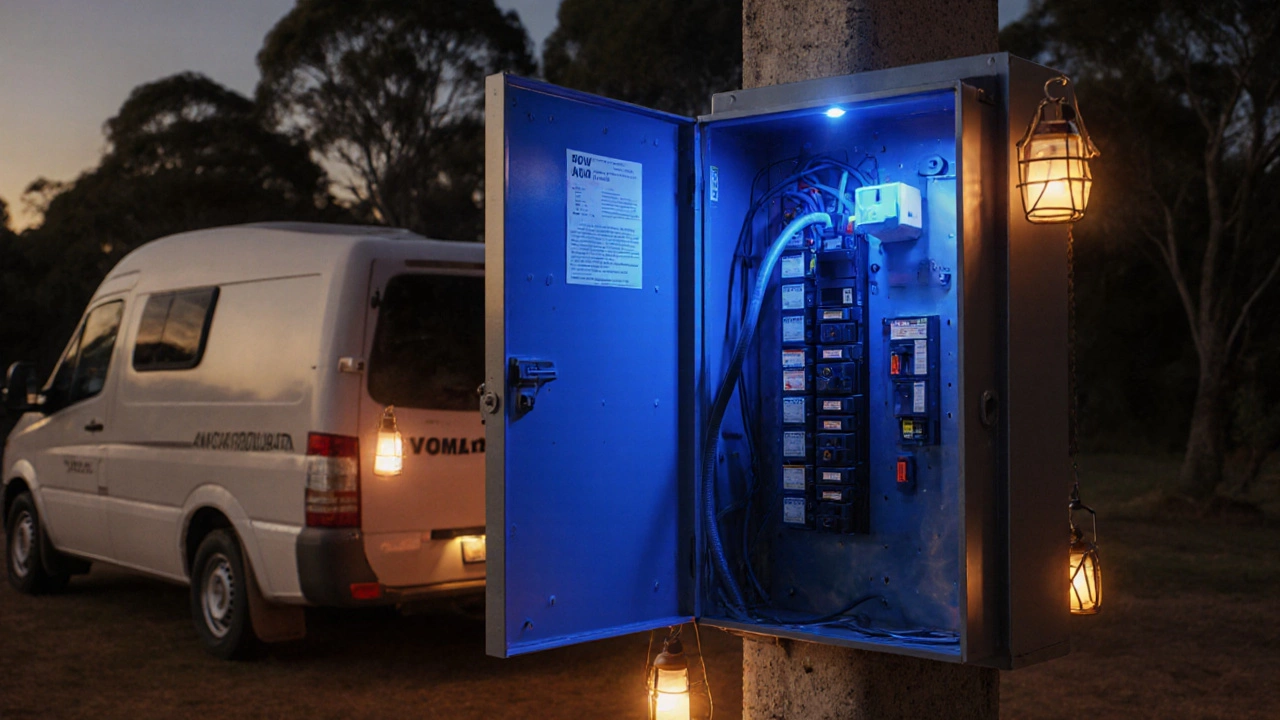RV Power Hookup
When working with RV power hookup, the process of linking your motorhome or campervan to an external electricity source at a campsite or service point. Also known as site hook‑up, it lets you run lights, appliances, and charging stations without draining your onboard batteries. RV power hookup is the backbone of comfortable road‑tripping, whether you’re parked in a busy motorhome park or tucked away in a wild‑camping spot.
Choosing the Right Power Source for Your RV
One of the most popular alternatives to a grid connection is solar power, energy captured by photovoltaic panels and stored in a battery bank for later use. Solar power requires three key parts: panels, a charge controller, and a deep‑cycle battery. The panels turn sunlight into electricity, the controller regulates voltage to protect the battery, and the battery holds the charge for evenings or cloudy days. Solar setups are silent, need no fuel, and can keep a small fridge, lights, and a laptop running indefinitely if you size them right. This clean source also reduces reliance on noisy generators and helps you stay off the grid during boondocking adventures.
When sunlight isn’t enough, many travelers turn to a generator, a portable engine that converts fuel into electricity for on‑site use. Generators come in gasoline, diesel, or propane models, each with its own pros and cons. A 3,000‑watt gasoline generator can power an air‑conditioner, microwave, and shower pump simultaneously, while a quieter inverter generator is better for campsites with noise restrictions. Knowing the fuel consumption rate and maintenance schedule is essential to avoid running out of power mid‑trip.
For short trips or backup power, a portable power station, a rechargeable battery pack with multiple AC, DC, and USB outlets offers a tidy solution. These units range from 200 Wh models that charge a phone and a LED lamp to 2,000 Wh systems that can run a small TV, a fan, and a coffee maker for several hours. Because they have no moving parts, they’re silent and produce zero emissions, making them perfect for quiet campsites or late‑night usage without disturbing neighbours.
All three options—grid hook‑up, solar panels, generators, and portable power stations—can be combined to create a hybrid system tailored to your travel style. For example, you might plug into site electricity whenever it’s available, rely on solar during the day, and fire up a generator for high‑draw appliances like a water heater. Understanding how each source works, its capacity, and its limits helps you avoid blown fuses, dead batteries, and unexpected fuel stops. Below you’ll find articles that dive deeper into each method, compare costs, and share real‑world tips from fellow RVers who have tested these setups across the UK and beyond.
-
 VIEW POST
VIEW POSTHow Does Electricity Work at Campsites? A Practical Guide
Oct, 8 2025|0 CommentsLearn how campsite electricity works, from grid hookups and amperage to generators, solar backups, safety tips, and load management for a hassle‑free camping stay.